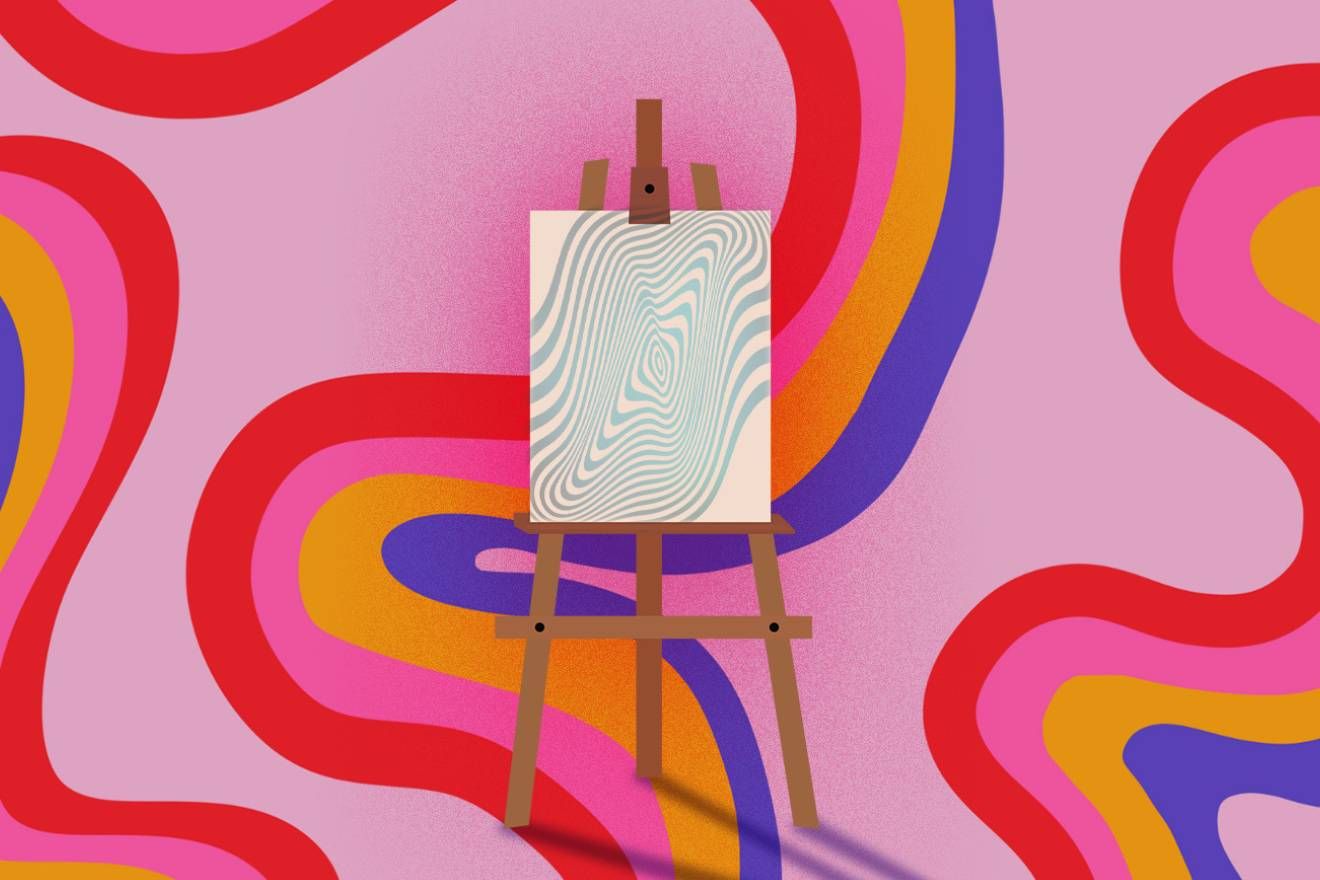Art in psychedelic therapy is becoming an important part of the resurgence in psychedelic medicine. The use of psychedelics to treat mental health conditions like PTSD is only beginning to be studied again. Researchers largely abandoned the clinical trials of the 1960s, following the stricter regulation of drugs and pharmaceuticals. Now, researchers are investigating the health benefits of psilocybin and other psychedelics. An interesting finding in the newly released research is that the setting in which trained professionals administer psychedelics could be just as integral to the outcome as other factors.
Follow your Curiosity
Sign up to receive our free psychedelic courses, 45 page eBook, and special offers delivered to your inbox.Psychedelics Past and Present
In the 1950s, psychedelics like LSD and mescaline began being tested by psychiatrists for use against mental health conditions. At first, people sought psychedelics as a possible remedy for alcoholism. LSD was given to patients and produced positive results, with many ceasing drinking and receiving the label of “improved” or “well improved.” These early forays into psychedelic treatment occurred in the United States, Canada, and the United Kingdom. By the early 1960s, they culminated with the world’s first intentional LSD therapy clinic in Powick Hospital, U.K.
There were two forms of psychedelic treatment administered for more than just alcoholism. Conditions believed to benefit from LSD included autism, schizophrenia, neurosis, and psychopathy. Patients were either given one large dose of LSD, known as psychedelic therapy, combined with psychotherapy. Or, they received several smaller doses in sequentially greater amounts along with psychoanalysis, known as psycholytic therapy. Estimates show that more than 40,000 patients underwent psychedelic treatment between 1950 and 1965; and that these studies produced over 1,000 scientific papers. However, many studies lacked sound scientific measures, like control groups.
Nevertheless, when the U.S. Congress and the Food and Drug Administration cracked down on pharmaceuticals in 1962, research into psychedelics’ positive effects on certain mental health conditions looked promising. Still, the new drug safety regulations, in combination with LSD’s designation as an experimental drug, ground research to a halt. It wasn’t until the early 2000s that psychedelic research resumed.
The current research takes many forms. Some are in clinical settings, while others are in private practice sites or carried out by individual investigators. MDMA may treat alcoholism, PTSD, and social anxiety. At the same time, psilocybin’s effects may benefit depression, PTSD, brain injury, addiction, and more. Today, psychedelic-assisted therapy could positively affect mental health conditions and be effective in neuro-oncology and neurosurgery. The full benefit of psychedelics is not yet known.
Still, early research shows that it has great neuroplastic potential, being able to help rehabilitate the brain. Researchers are only beginning to understand how psychedelics may change the brain’s structure and function for the better, helping to break down ingrained cognitive habits. Common psychedelics used in studies include psilocybin, LSD, MDMA, ibogaine, and ayahuasca. In most cases, doctors prescribe small doses, called microdoses. These amounts are not strong enough to produce the mind-altering effects known as a “trip” but still result in positive benefits.
Why Does the Setting Matter During Psychedelic Use?
In recent studies, researchers have found that it is not only the type of psychedelic or the dose that matter but also the setting in which the drugs are administered. Setting refers to the “physical, social, and cultural environment.”
One study called the setting pivotal to psychedelics’ immediate and lasting effects. The study reviewed 43 psychedelic trials to determine their significance. The field still hasn’t agreed on the setting. However, researchers theorize that dosing environments are an essential component.
The setting includes various aspects of the physical environment, such as music, furniture, and artwork. Many psychedelic therapy sessions base their environment on past research without a systematic and comprehensive approach to the setting. The common environment includes pleasing artwork, a curated playlist, and comfortable seating like a couch. The room in which the session takes place is often a warm temperature. Usually, the patient will lie down and sometimes may use eye shades.
Art in Psychedelic Therapy
More research is needed to create standardized protocols for creating an environment that integrates art in psychedelic therapy. However, another important aspect of the setting is significant but not standardized. Patients will often bring meaningful objects with them. It could be a song or a piece of artwork that is personally significant to them. The setting and mindset of the individual are the mediators of the session. If the patient feels comfortable, the outcome will likely be positive. Alternatively, the inability to bring something meaningful or feeling alienated by the pieces in the room could hinder the effects and experience.
One group of researchers noted that psychedelic studies currently involve predominantly white patients compared to the United States population. They proposed a two-year study to investigate ways to increase clinical representation in psychedelic studies. One notable feature includes exploring how the artwork in the setting influences the recruitment and retention of minorities. To compensate for the participants’ inability to bring their personal items and negate the effects of alienating decor, researchers will have participants review a catalog of artwork and select meaningful pieces before their first session. The study highlights further how a setting that is therapeutically beneficial to a patient can maximize the benefits of psychedelic therapy.
Takeaway
Psychedelic therapy has once again become a growing research field. While some of the past features remain the same, such as the psychedelics and dosages used and how they are administered, new forays seek to highlight the importance of the setting. Research has not yet reached a consensus on how important the setting is.
Yet, scientists speculate that a patient’s connection and comfort with the physical environment are pivotal. Subsequently, decor that alienates patients can hinder the outcome of treatment. Meaningful art displayed in a comfortable environment may help to maximize the acute and enduring benefits of psychedelic treatment.






